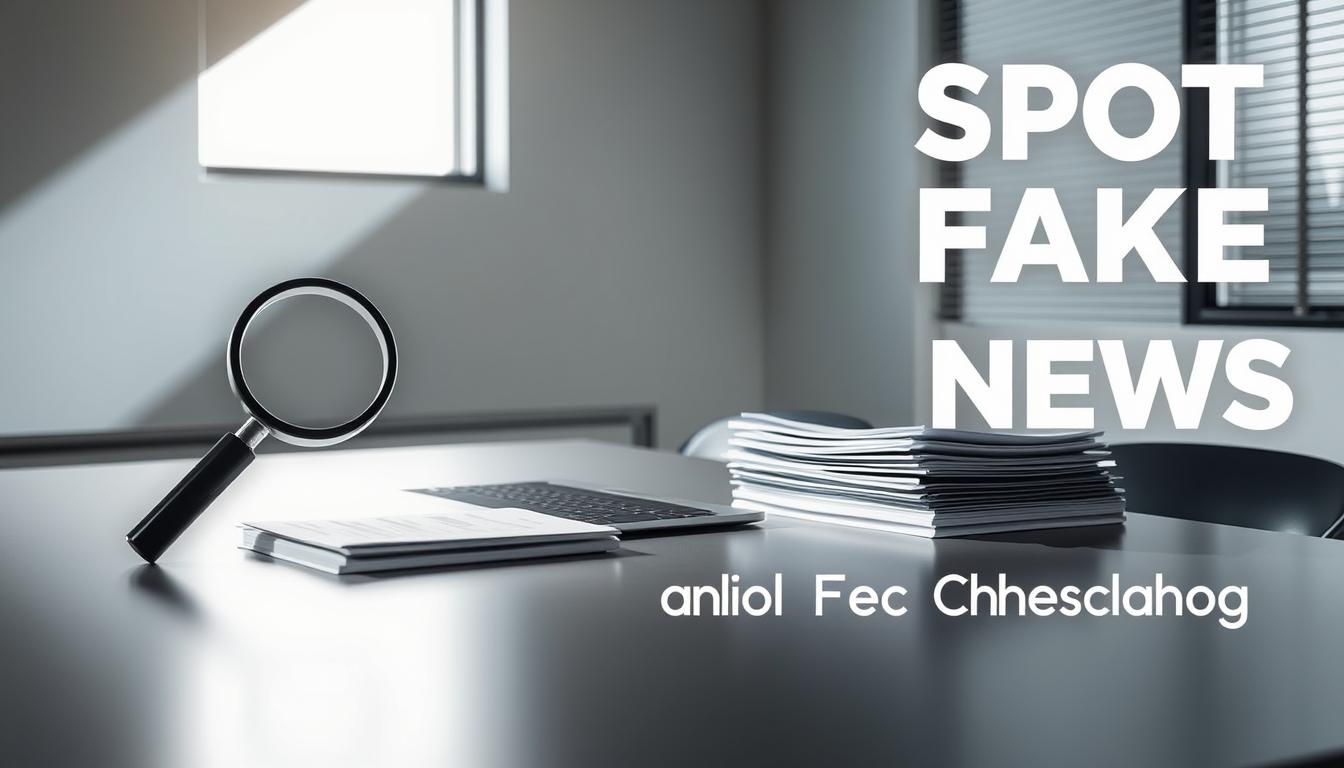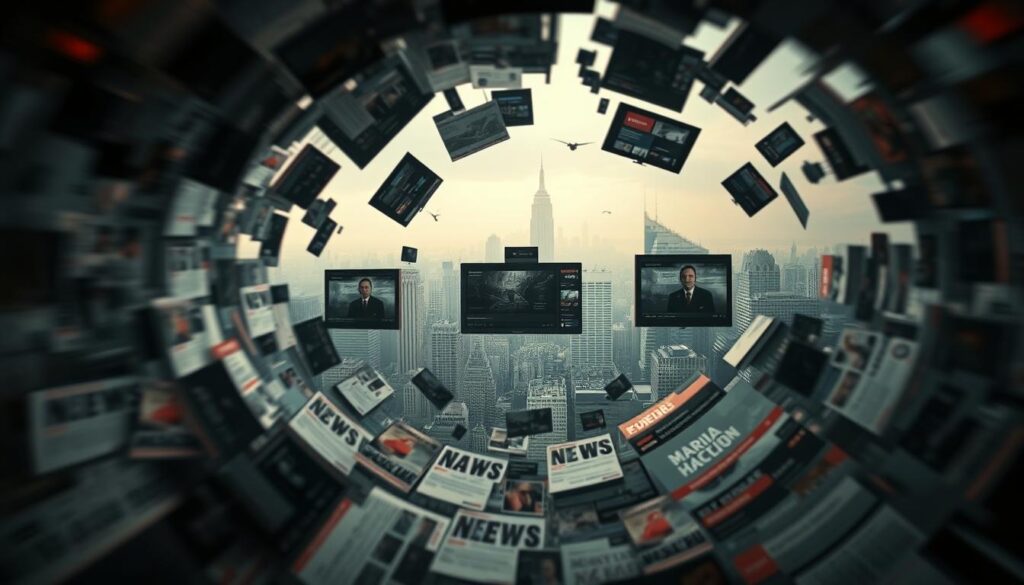Physical Address
304 North Cardinal St.
Dorchester Center, MA 02124
Physical Address
304 North Cardinal St.
Dorchester Center, MA 02124

In today’s digital world, telling truth from fiction feels like finding a needle in a haystack. Viral headlines and social media posts often blur the line between verified information and sensationalized claims. Whether it’s a pandemic update or breaking news about global conflicts, the stakes for accuracy have never been higher.
Organizations like the Google News Initiative work tirelessly to combat misinformation, but the responsibility also falls on readers. Recent events—from COVID-19 myths to war-related propaganda—show how quickly false narratives spiral out of control. A single unverified claim can damage reputations, fuel panic, or even influence legal outcomes.
Why does this matter? Modern media moves at lightning speed. Sophisticated editing tools and AI-generated content make it easier than ever to distort reality. Without sharp fact-checking skills, even seasoned journalists risk amplifying errors that erode public trust.
This guide isn’t just about spotting lies. It’s about empowering you to think critically, verify sources, and protect your credibility. You’ll learn techniques used by top newsrooms to dissect claims, cross-reference data, and deliver reliable stories—even when the truth feels buried.
Visual evidence once settled debates—now it often starts them. Modern tools let anyone alter photos, fabricate videos, or twist quotes with startling realism. A recent MIT study found false stories spread six times faster than factual ones on social media.
Deepfake technology lets bad actors swap faces in videos or clone voices. Last year, a fabricated clip of a world leader went viral, sparking international tensions within hours. Even Wikipedia’s collaborative model faces challenges—its open-editing system allows temporary vandalism or biased edits before moderators catch them.
Platforms once considered trustworthy now require scrutiny. “Our team doesn’t just debunk lies—we rebuild trust,” says Glenn Kessler, lead fact checker at The Washington Post. Major outlets like BBC and Associated Press now employ full-time verification specialists to combat this crisis.
Every shared post carries weight. When journalists at Reuters verify a warzone report, they cross-check satellite images, eyewitness accounts, and local news sources. Readers can adopt similar rigor—questioning viral claims before amplifying them.
“Accuracy isn’t just professional pride—it’s public service.”
False narratives erode elections, health choices, and community trust. By adopting verification habits—like reverse-searching images or tracking original sources—we protect not just ourselves, but the entire information ecosystem.
The art of distorting reality through media isn’t new—it’s as old as communication itself. What began with airbrushing political rivals out of Stalin-era photos has exploded into AI-generated content that can rewrite history in real time. Today, anyone with a smartphone can alter images, fabricate videos, or engineer narratives that challenge our grasp on facts.

Historical examples reveal manipulation’s long shadow. Britain edited WWII newsreels to shape perceptions of Hitler, while modern conflicts see video game clips rebranded as battlefield footage. Deepfake technology now lets creators swap faces in speeches or generate synthetic voices—tools once exclusive to Hollywood studios.
Spotting fakes requires sharp eyes. Look for mismatched shadows in photos, unnatural blinking in videos, or pixel patterns that betray digital edits. During Ukraine’s invasion, a fabricated Zelensky surrender clip spread globally before misinformation detection strategies exposed its artificial origins.
Manipulators exploit emotional triggers. A sensational claim about vaccine side effects gains traction not through evidence, but by aligning with existing fears. Social platforms amplify these messages, feeding users content that confirms their bias while burying contradictory data.
Case studies show the damage. Altered images from protests get framed as “proof” of violence, while selective video edits portray complex events as simple moral dramas. By recognizing these patterns, we disrupt the cycle of fake news—one skeptical click at a time.
Separating verified content from clever fabrications requires a detective’s mindset. Start by examining who’s sharing the story and where their evidence originates. This systematic approach transforms casual readers into informed truth-seekers.
Dig into an author‘s background before trusting their words. Search LinkedIn profiles for relevant work experience or academic credentials. A climate change piece gains weight if written by an environmental scientist rather than a lifestyle blogger.
Legitimate platforms showcase transparency. Missing “About Us” pages or generic contact emails (e.g., info@domain.com) often signal unreliable sources. Reputable outlets clearly state their mission and editorial team.
| Credibility Check | Trustworthy Signs | Red Flags |
|---|---|---|
| Author Expertise | LinkedIn profile shows relevant PhD | No professional social media presence |
| Website Transparency | Detailed editorial policy page | Anonymous authors listed |
| Source Quality | Cites peer-reviewed journals | Links to obscure blogs |
Outdated statistics mislead even when originally accurate. A 2018 jobs report won’t reflect pandemic-era employment trends. Always check publication dates against recent developments.
Cross-reference surprising claims with primary sources. If an article quotes a CDC study, locate the original report using government website searches. Our step-by-step guide simplifies tracing data to its roots.
Create this verification checklist:
Digital detectives need the right tools to expose false narratives. From historical imagery comparisons to cross-platform verification, modern technology offers powerful ways to confirm authenticity.

Drag-and-drop becomes your truth serum with reverse image search. Upload questionable photos to Google Images—if results show the same images from years ago, you’ve caught recycled content. Street signs and building layouts in Google Maps often reveal location inconsistencies in viral posts.
The Google News Initiative provides time-travel capabilities through Earth Pro. Compare current satellite views with historical snapshots to spot altered landscapes. Their News Archive digs through decades of newspaper scans, perfect for debunking “this happened before” claims.
Trusted sites like Snopes and Full Fact operate like digital lie detectors. These platforms document their verification processes, showing how they analyze claims from multiple angles. Africa Check specializes in regional misinformation, proving context matters in truth-seeking.
Combine these resources for maximum impact. Cross-reference a suspicious statistic with government databases while running associated photos through TinEye. This layered approach catches fabrications that slip through single-tool checks.
“Tools mean nothing without critical thinking,” notes a Reuters verification trainer. “Always ask: Who benefits if I believe this?” Pair tech with skepticism to become an unstoppable truth-finder.
Truth battles fiction daily in newsrooms worldwide. When the BBC received footage of Syrian airstrikes in 2022, their team spent 72 hours verifying coordinates through satellite data and local journalists. This meticulous process stopped false claims about chemical weapons from spreading.
The Google News Initiative partners with 12,000+ media outlets to fight misinformation. Their Fact Check Explorer tool tracks 150,000+ verified stories across 80 languages. During Brazil’s elections, it exposed fake voting machine articles by cross-referencing official technical reports.
| Fact-Checking Body | Verification Method | Impact |
|---|---|---|
| Full Fact (UK) | Live-tracking parliamentary debates | Corrected 400+ misleading claims in 2023 |
| Snopes | Reverse-engineering viral memes | Debunked 70% of COVID-19 hoaxes |
| Africa Check | Local language source verification | Reduced false election rumors by 55% in Nigeria |
A 2020 social media post claiming “doctors” endorsed bleach as COVID-19 treatment spread to 45 countries. The Washington Post traced it to a fringe group using stock photos of lab coats. Their news team created a verification checklist now used globally:
“Every unnamed ‘expert’ is a red flag waving.”
When a deepfake video of Ukraine’s president surfaced, AP’s journalists compared shadows and microphone patterns to authentic footage. This rapid response model helps balance speed with accuracy during breaking news events.
Arm yourself with skepticism and curiosity in today’s information battleground. Every viral claim demands three questions: Who benefits? What’s missing? Where’s the proof? These simple checks separate credible content from dangerous fiction.
You’ve gained professional-grade verification skills—from sniffing out altered videos to tracing URLs back to their source. Major news websites use these same methods to protect their credibility. Remember, even polished sites can spread misinformation if they prioritize speed over accuracy.
Trust your instincts. If a story feels emotionally charged or oversimplified, dig deeper. Use reverse search tools to verify images. Cross-check surprising facts with trusted databases. Share only what survives this scrutiny.
Your new skills make you a frontline defender against fake news. Teach others to question sources and demand evidence. Together, we can turn the tide against digital deception—one verified article at a time.